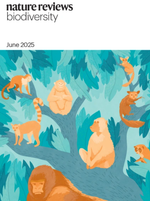Nature Microbiology
Jane P. Messina, Oliver J. Brady, Nick Golding, Moritz U. G. Kraemer, G. R. William Wint, Sarah E. Ray, David M. Pigott, Freya M. Shearer, Kimberly Johnson, Lucas Earl, Laurie B. Marczak, Shreya Shirude, Nicole Davis Weaver, Marius Gilbert, Raman Velayudhan, Peter Jones, Thomas Jaenisch, Thomas W. Scott, Robert C. Reiner Jr & Simon I. Hay
View Journal Article / Working PaperDengue is a mosquito-borne viral infection that has spread throughout the tropical world over the past 60 years and now affects over half the world’s population. The geographical range of dengue is expected to further expand due to ongoing global phenomena including climate change and urbanization. We applied statistical mapping techniques to the most extensive database of case locations to date to predict global environmental suitability for the virus as of 2015. We then made use of climate, population and socioeconomic projections for the years 2020, 2050 and 2080 to project future changes in virus suitability and human population at risk. This study is the first to consider the spread of Aedes mosquito vectors to project dengue suitability. Our projections provide a key missing piece of evidence for the changing global threat of vector-borne disease and will help decision-makers worldwide to better prepare for and respond to future changes in dengue risk.




